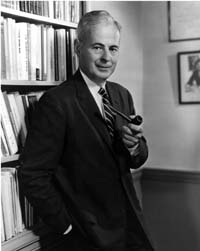Lincoln Gordon
| Lincoln Gordon | |
|---|---|
 |
|
| United States Ambassador to Brazil | |
|
In office 9 October 1961 – 25 February 1966 |
|
| President |
John F. Kennedy Lyndon B. Johnson |
| Preceded by | John M. Cabot |
| Succeeded by | John W. Tuthill |
| Personal details | |
| Born | September 10, 1913 New York City, New York, U.S. |
| Died | December 19, 2009 (aged 96) Mitchellville, Maryland, U.S. |
| Political party | Democratic |
| Spouse(s) | Allison Gordon (née Wright) |
| Children | Sally (née Anne), Robert, Hugh, Amy |
| Alma mater | Harvard University, Oxford University |
| Profession | Academic and Diplomat |
Abraham Lincoln Gordon (September 10, 1913 – December 19, 2009) was the 9th President of the Johns Hopkins University (1967–71) and a United States Ambassador to Brazil (1961–66). Gordon had a career both in government and in academia, becoming a Professor of International Economic Relations at Harvard University in the 1950s, before turning his attention to foreign affairs. Gordon had a career in business after his resignation as president of the Johns Hopkins University, but remained active at institutions such as the Brookings Institution until his death. His full name was Abraham Lincoln Gordon, but he never used his first name.
Born in 1913 in New York City, Gordon attended the Ethical Culture Fieldston School in Riverdale, and later attended Harvard University. As an undergraduate at Harvard, Gordon was involved with the university's glee club; because Prohibition was still in place, wine was usually served at the Club’s parties.
While he was a student at Harvard, Gordon met his future wife, Allison Wright, at a film exhibition in Dunster House. They married in 1937.
He received a BA from Harvard in 1933. He received a DPhil from Oxford University as a Rhodes Scholar in 1936.
Gordon was program vice-chairman of the War Production Board from 1944 to 1945. He started in the Bureau of Research and Statistics of the War Production Board before joining the staff of the Requirements Committee, helping design the Controlled Materials Plan. This Plan regulated the conservation and allocation of critical materials such as steel, copper, zinc, and aluminum—materials that were scarce or were in danger of becoming so during World War II.
...
Wikipedia
